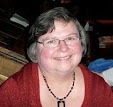This book has been sitting on my book shelf since its publication in 2003. I am not sure why I hadn't picked it up to read, but it rose to the top of the TBR list this year. As much as I try to read everyday, life and clients seem to get in the way. Although fiction, The Dante Club is based on true facts, most of which I was unaware. As per usual, as I was reading, I had to inform myself as to the veracity of what Pearl was writing.
Set in Boston and Cambridge, Massachusetts in 1865, the book's basis is the 1st American translation of Dante's Inferno. The novel opens with one of the most gruesome descriptions ever published as it described the death of Judge Healey:
"Nell kicked away the wasps’ nest and stuffed the judge into the wheelbarrow. She half wheeled and half dragged his naked body through the meadows, over the garden, through the halls, and into his study. Throwing the body on a mound of legal papers, Nell pulled Judge Healey’s head into her lap. Handfuls of maggots rained down from his nose and ears and slack mouth. She began tearing out the luminescent maggots from the back of his head. The wormy pellets were moist and hot. She also grabbed some of the fire-eyed flies that had trailed her inside, smashing them with the palm of her hand, pulling them apart by the wings, flinging them, one after another, across the room in empty vengeance."
The members of the Dante Club, who were supporting Henry Wadsworth Longfellow in translating The Inferno, were Oliver Wendell Holmes, Sr, James T. Fields, George Washington Greene, and James Russell Lowell. Judge Healey was the first in a series of murders that began to intrigue the club because of their similarity to the punishments in Dante's poem. With such a connection the members of the club take it upon themselves to help solve the murders. The second victim is Reverend Talbot, who was found in a cemetery, buried upside down with this feet exposed and set fire. Upon removal, a large sum of money was found. Talbot had been paid by the Harvard Corporation to preach against Dante. The third murder was that of Phineas Jennison, who was also a contributor to the Harvard Corporation, found dead and sliced open as described by Dante
The novel follows the investigation by the club as well as by Nicholas Rey, a Boston's first black policeman. It becomes apparent to the club that the murderer is tied to the publishing giant of the time, Ticknor & Fields, through a Civil War soldier who had listened to Greene's sermons.
The final solution has a climatic and brutal end to it after numerous red herrings were planted by the author. It is also a look at the families of the poets, their lives, and the culture of Boston. The prejudice that faces Nicholas Rey exposes the hypocrisy of those who fought for an end of slavery in the Civil War. His life is fraught with discrimination and often dismissed because of his color.
The Dante Club is a rich read, not only for the manner in which the crimes are solved, but for the insight in to the remarkable influence and heritage of Dante. As when I read The Inferno by Dan Brown, Dante has always held a special interest for me. A great and suspenseful thriller.

